Human Health Risk Assessment
Human Health Contaminants of Concern (COCs)
Table 1. Human Health Contaminants of Concern
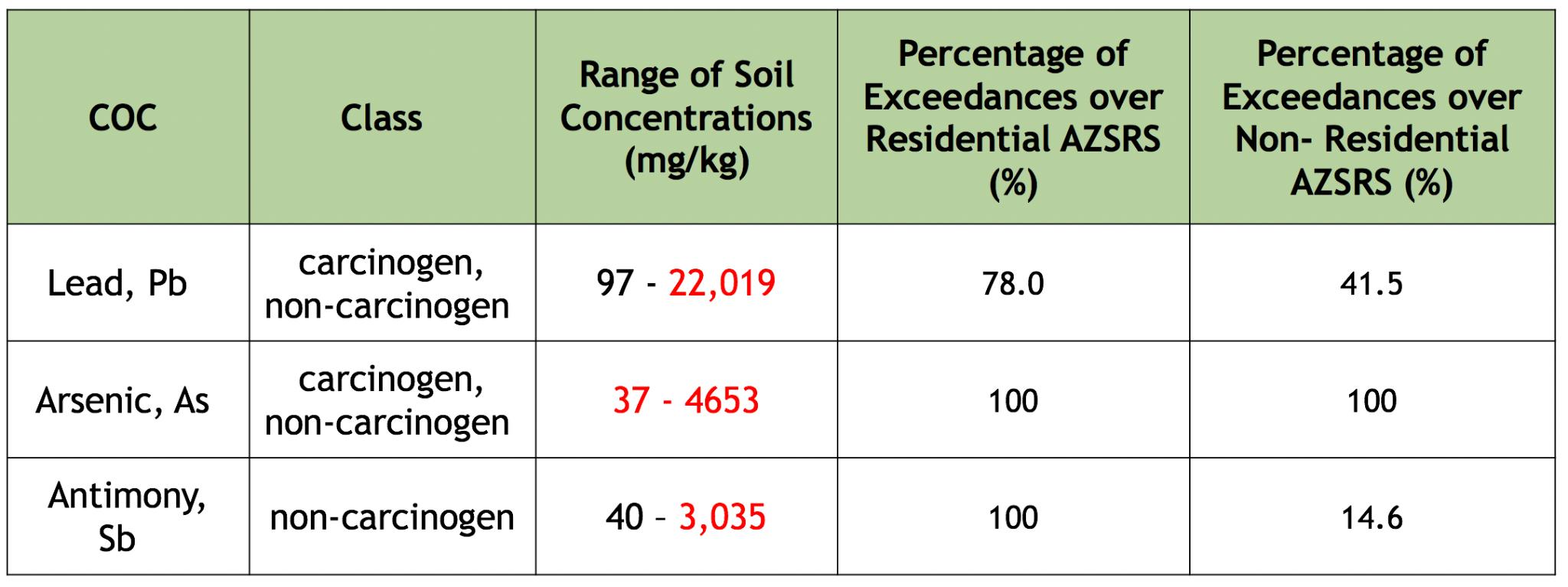
Adverse Health Effects
Pb: anemia, weakness, kidney & brain damage, developmental issues, cancer
As: cancer (skin, liver, kidney, lung, bladder), hyperpigmentation, keratosis, vascular complications
Sb: reduced longevity, altered cholesterol concentrations, decreased blood glucose levels
Exposure Scenarios
Exposure scenarios were created for workers, residential use, and recreational use. These scenarios were used to calculate intake from ingestion.
Table 2: Worker Exposure Scenario
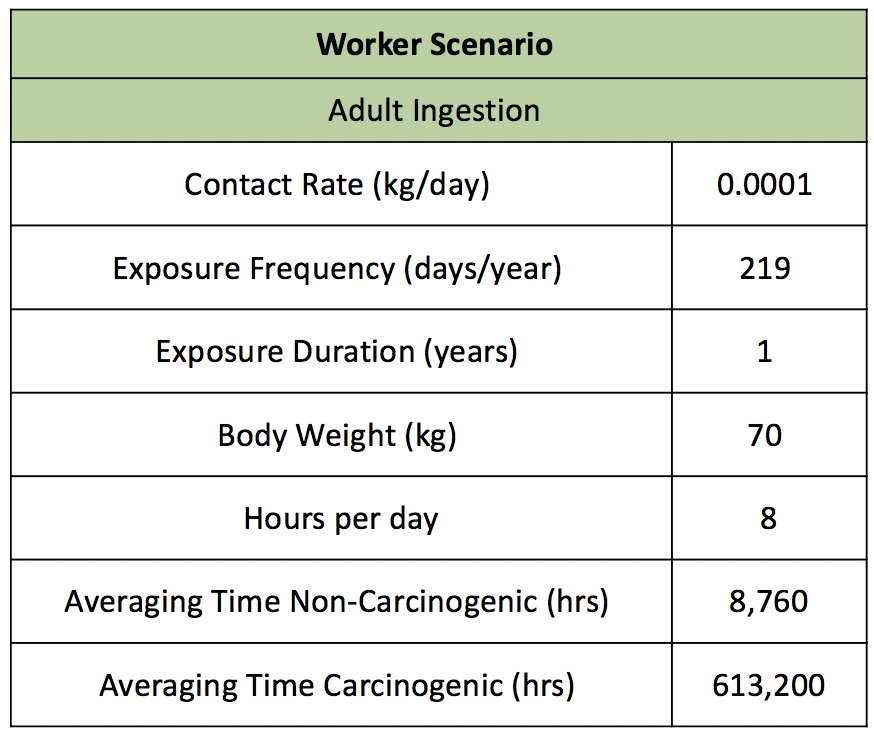
The contact rate was determined by the average amount of soil an adult ingests daily, converted to kg/day to obtain a contact rate of 0.0001 kg/day. The exposure frequency was determined by how many workdays there are per year, excluding holidays and average vacation time, totaling 219 days per year. A standard 8-hour workday is assumed in the model. One year was selected as the exposure duration as it was estimated that a cleanup would take one year. The average body weight of an adult is estimated at 70 kg. Averaging time is dependent upon whether the analysis is for a non-carcinogen or a carcinogen. Risk for carcinogens is always averages over 70 years, even for children. It is noted that averaging times are over the entire time (1 year or 70 years), not just the 8-hour workday.
The contact rate was the same as the worker scenario for adults and older children. For children 0-6 years old, a value of 200 mg of soil per day was used. The exposure frequency was an estimate of how often people visited the site for recreational activities. An estimate of 2 days per month of recreational activities was assumed resulting in 24 days per year. The average exposure duration for an adult was estimated at 30 years, for children 7-12 is 6 years, and for children 0-6 is 6 years. The average body weight is 70 kg for adults, 29 kg for children ages 7-12, 16 kg for children ages 0-6. Averaging time was found in days for recreational use scenarios because people are at the site for 24 hours per day.
Table 3: Recreational Exposure Scenario
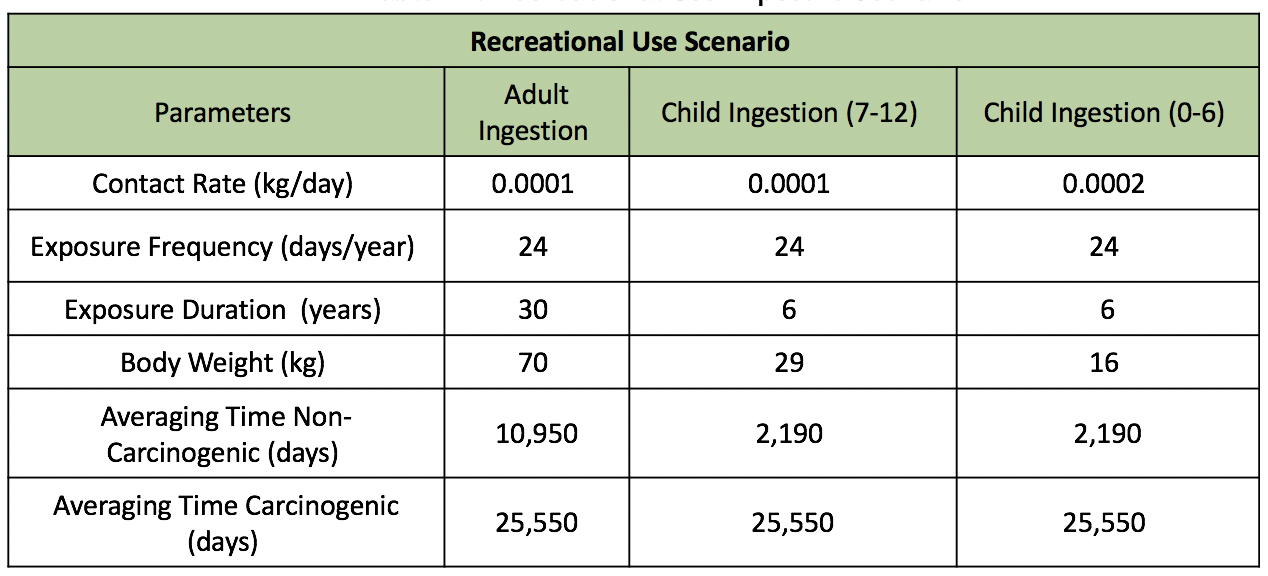
Table 4: Residential Exposure Scenario
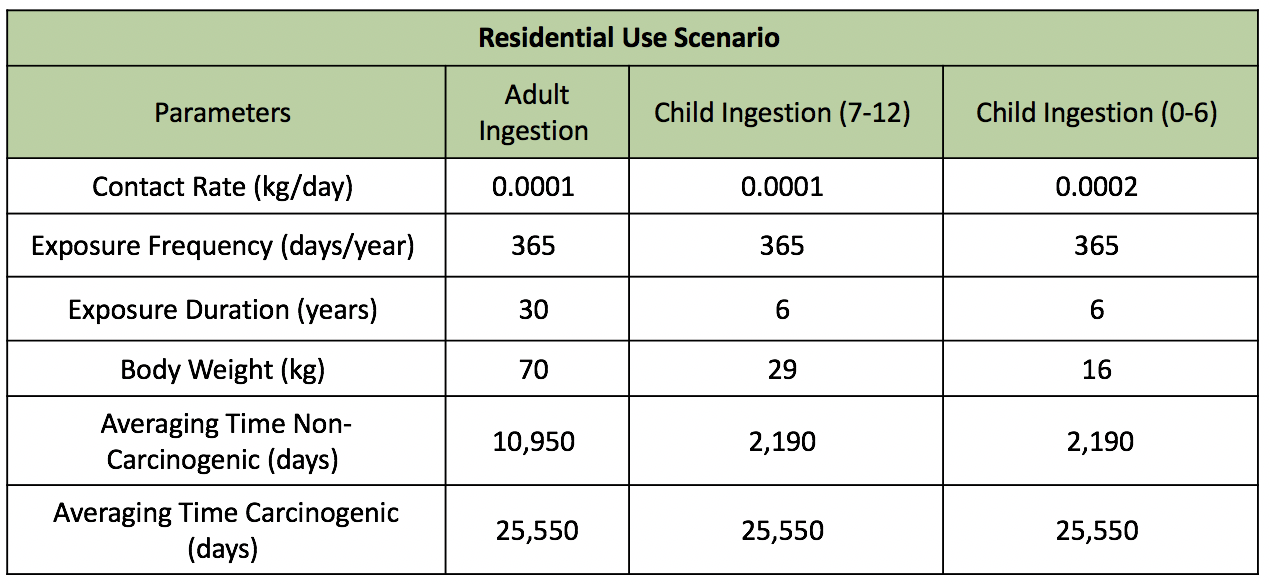
The contact rate, exposure duration, body weight, and averaging time were calculated in the same way as discussed in the worker scenario and the recreational use scenarios. The exposure frequency is 365 days per year for adults and both categories of children for residential use.
Intake was calculated using Equation 1 below.
Equation 1. Intake Equation

Where:
I = Intake (mg/(kg of body weight-day))
C = Concentration at exposure point (mg/kg)
CR = Contact Rate (kg/day)
EF = Exposure Frequency (days/year)
ED = Exposure Duration (years)
BW = Body Weight (kg)
AT = Averaging Time (days)
Risk Calculation
Slope factors (SF) and reference doses (RfD) were found for Arsenic and Antimony. Slope factors represent the incremental lifetime cancer risk and reference doses are the highest dose someone can take daily without experiencing adverse health effects. Slope factors are used to calculate carcinogenic risk and reference doses are used to calculate non-carcinogenic risk.
Lead, however, does not have a SF or RfD due to adverse health effects being observed at very low exposures to lead. Lead risk was determined using biokinetic modeling, specifically the Adult Lead Model (ALM) and Integrated Exposure Uptake Biokinetic Model (IEUBK).
Table 5: Slope Factors and Reference Doses for Arsenic and Antimony

Carcinogenic Risk was calculated using Equation 2 below.
Equation 2: Carcinogenic Risk Equation

Where:
Ic = Carcinogenic Intake (mg/(kg of body weight-day))
SF = Slope Factor (mg/(kg-day))-1
Carcinogenic Risk
Table 6. Carcinogenic Risk
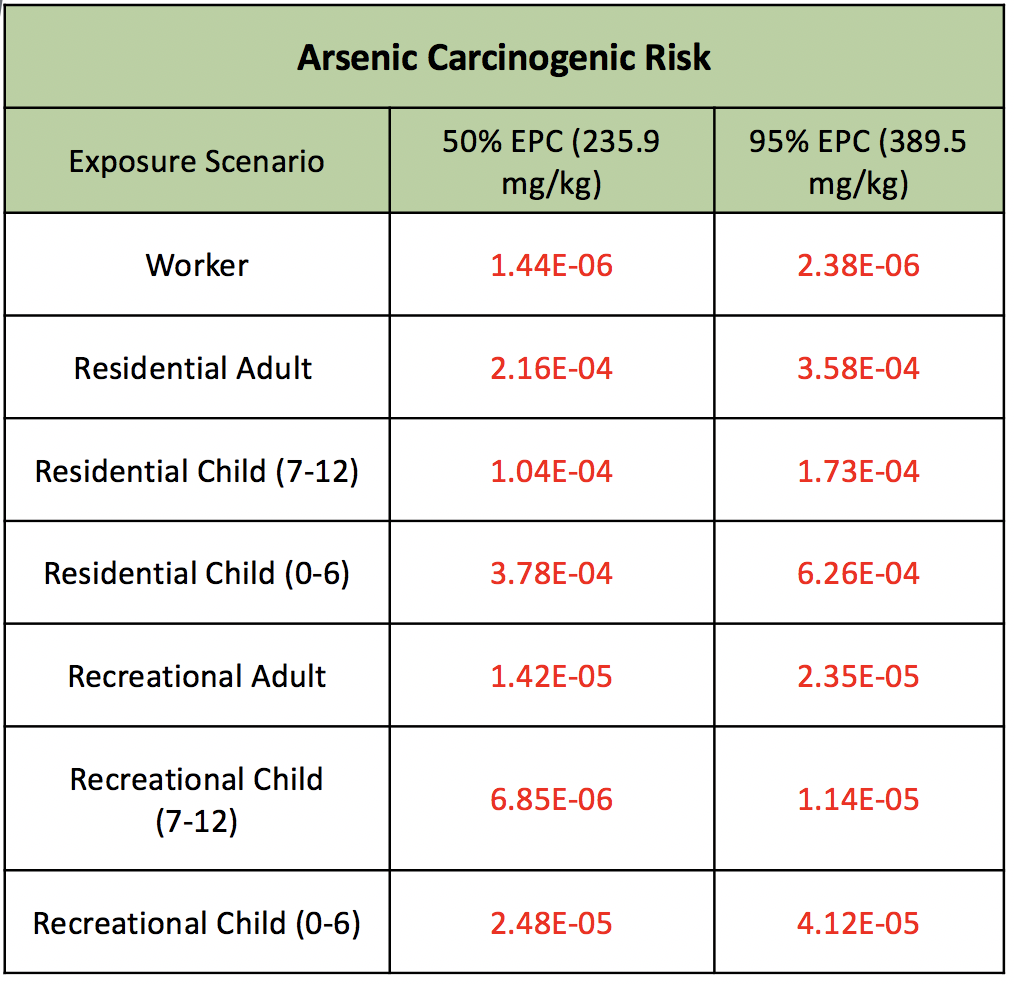
*Red indicates risk is present
Any risk value greater than 1E-06 or one in a million, is considered risk. All scenarios presented above pose a carcinogenic arsenic risk.
Non-carcinogenic risk was calculated using Equation 3 below.
Equation 3: Non-carcinogenic Risk Equation

Where:
HI = Hazard Index (unitless)
IN = Non-Carcinogenic Intake (mg/(kg of body weight-day))
RfD = Reference Dose (mg/(kg-day))
Non-Carcinogenic Risk
Table 7. Non-carcinogenic Hazard Indices (HI)
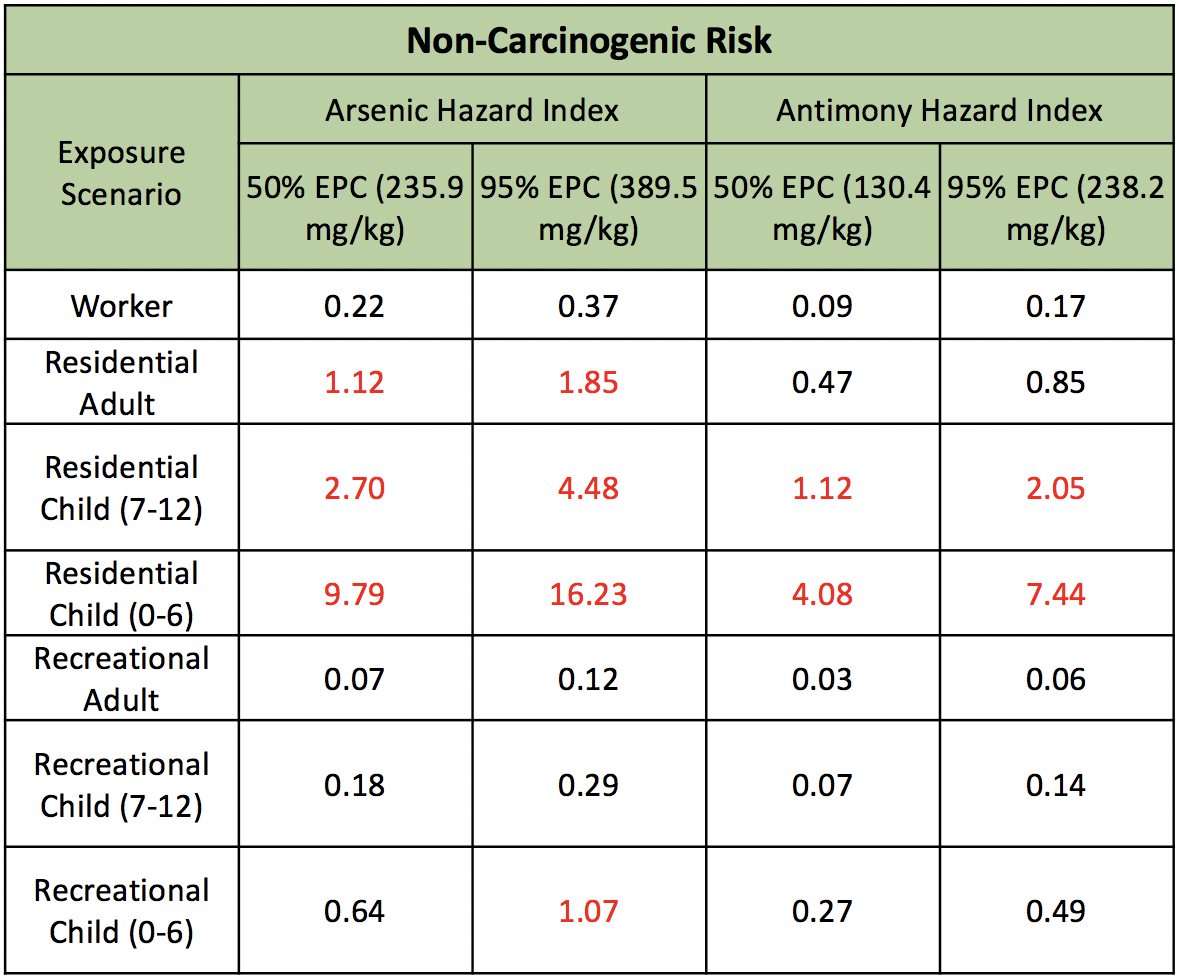
For non-carcinogens, a hazard index less than 1.0 is considered acceptable. For arsenic at the site, all residential scenarios and the maximally exposed recreational child (0-6) are considered hazardous. For antimony at the site, only residential child scenarios are considered hazardous.
Lead Risk
The ALM and IUEBK were used to calculate adult and child PbB for each exposure scenario. For both children and adults, the threshold at which adverse health effects occur is 5 µg/dL.
Table 8. ALM Risk Results
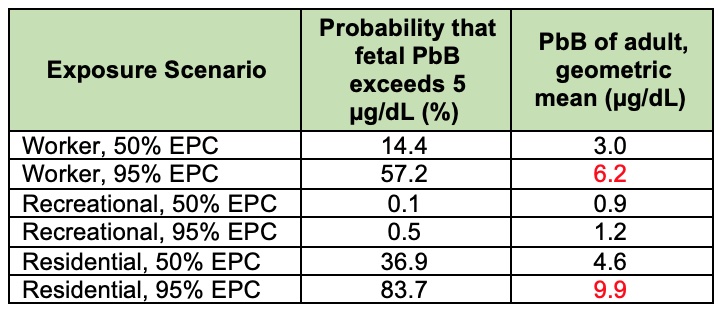
Lead poses a risk for the maximally exposed worker and maximally exposed resident.
Table 9. IEUBK Child Lead Risk, Residential Scenario

Table 10. IEUBK Child Lead Risk, Recreational Scenario
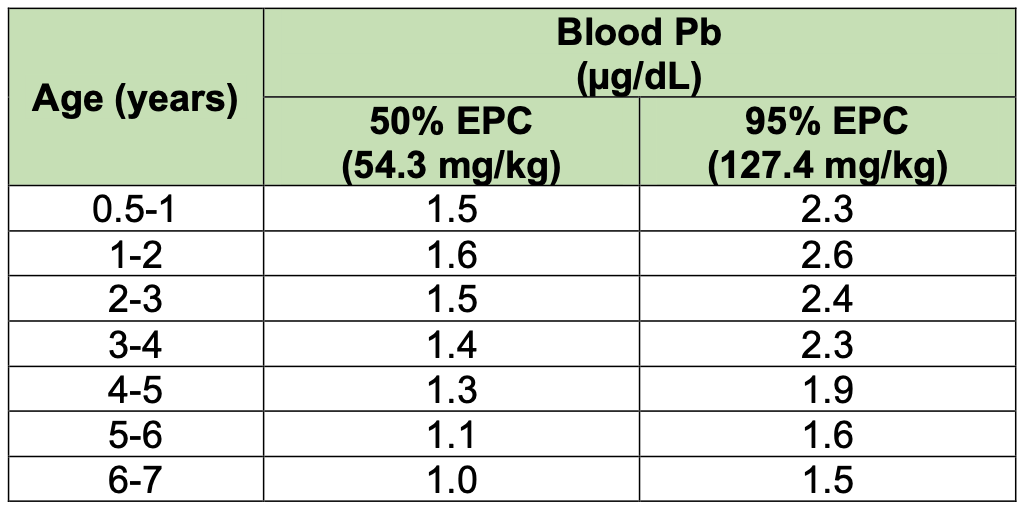
Lead poses a risk for children ages 6 months to 7 years in a residential scenario and no risk in a recreational scenario.
